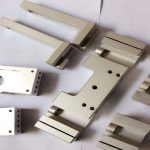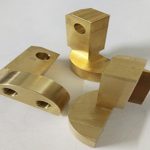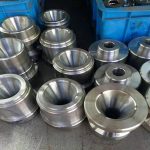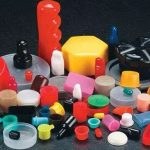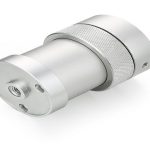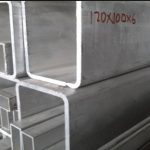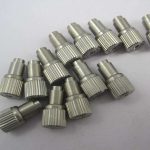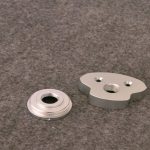Titanium is commonly used in the production of critical aerospace components and medical equipment. It has a high strength-to-weight ratio and excellent corrosion resistance, making it suitable for thin-wall designs.
It is no secret that titanium alloys are difficult to machine, especially when compared to ordinary steel and stainless steel. It has poor thermal conductivity and generates high cutting force and heat at the cutting edge. This material has a great demand for cutting tools. If not handled properly, it will cause premature tool wear and poor surface quality.
The fine turning of titanium must be a wet process. High-precision coolant has obvious advantages, especially because it can be directed to the cutting area. Photo courtesy of Sandvik Coromant.
The low modulus of elasticity will cause the larger parts of these materials to spring back. This modularity is one of the advantages of materials, especially for structural aerospace components that require this mobility. However, this poses a challenge to machining, which usually results in tool vibration, chatter and poor surface finish.
Edwin Tonne, a training and technical expert at Horn USA Inc. in Franklin, Tennessee, said: “Titanium usually does not shear effectively, so the material rebounds and the dimensional control of the parts is more difficult.” Careful maintenance can solve this problem. In addition, during the finishing process, force and heat are concentrated on a small part of the cutting edge, which breaks the cutting edge faster than other materials. ”
Certain applications, especially critical components in aerospace, have strict requirements for surface integrity. Many stores have implemented reliable and proven processes for many years. These processes may be running, but with the development of the latest tools, there are usually better or more production options, especially those related to finishing.
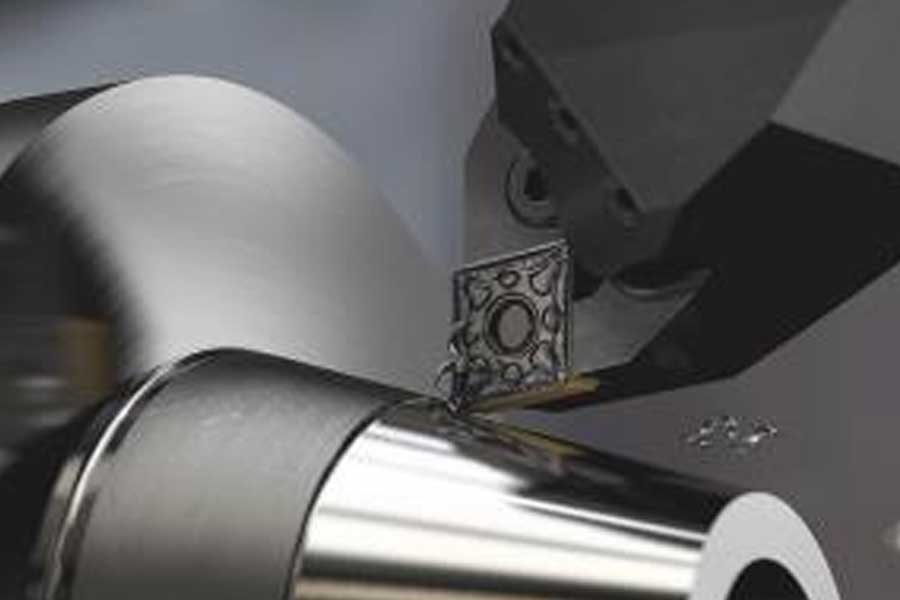
Kevin Burton, a turning product and application expert at Sandvik Coromant in Mississauga, Ontario, said: “We have seen many stores that are reluctant to change the current process, even if it means better The same is true for surface treatment.” “If the certified process uses non-coated carbide blades, then from a time and financial point of view, the store may not want to switch to coated or diamond blades due to the additional cost. For grades , The situation is the same. With the emergence of a new generation of grades, although they usually have the same elements, but with different percentages, some colors look different. However, shops tend to worry about the coating left on the surface of the parts .”
Burton pointed out that although the current process may be running, upgrading to new cutting tools with different coatings or grades can significantly increase productivity and improve surface quality.
Choose The Right Blade
Uncoated titanium alloy blades have been used in shops for many years, and many are still in use. However, there are many different types of titanium, and other factors need to be considered in order to obtain a better surface finish during turning.
Experts recommend using a physical vapor deposition (PVD-) coated blade because it is thinner. For titanium, it is recommended not to use thick coatings due to possible chemical reactions. Many coatings today contain titanium, such as TiCN for chemical vapor deposition (CVD). This is why PVD is usually recommended.
“PVD coating has high temperature resistance and lubricity, which can reduce the accumulation of edges and heat,” Tonne said. “When it comes to blades, the best shape is round, but because of the shape of the part, it is usually not practical. C or W blades can provide the best finish with part feature gaps. For negative blades, make sure that the top The rake angle is positive. If tight tolerances are required, fully grinding the blade can improve the results.”
Titanium Turning
Boehlerit MT geometry is used for titanium turning. Photo courtesy of Horn.
Tonne pointed out that people mistakenly think that the shop can use roughing blades for finishing. The geometry and edge preparation are specifically designed for the application, so he recommends consulting the tool supplier for the best blade instead of a general-purpose blade.
For finishing, Burton recommends the use of polycrystalline diamond (PCD) inserts, because the surface speed is much higher, which of course will greatly reduce the titanium machining time. However, he pointed out that some stores have difficulty accepting visual differences on the surface.
Burton said: “When we started finishing with PCD, it looked completely different from other blades.” “Titanium looks really well polished, almost has a hardened steel, super-finished appearance.”
Why Wiper?
Similar to PCD blades, wipers are the first choice under stable conditions, and it is recommended to use wipers whenever possible.
Burton said: “We noticed this when we introduced the wiper many years ago.” “Due to the refraction of light, the wiper produces a different-looking surface, showing a gray-scale surface appearance. However, after When measured, the surface quality is still better. This is a challenge that many shops must understand and overcome.”
Wipers are mainly considered to be high-feed rate machined blades. Using them, the workshop can increase the feed rate, thereby shortening the cutting time and effectively extending the tool life. However, if the wiper is used at a normal feed rate, the shop can obtain a considerable improvement in surface quality.
Burton said: “The rule of thumb is that while maintaining the normal feed rate, the surface finish will be twice the original; and doubling the feed rate will maintain the normal surface finish.”
The wiper plug-in is built through many additional radii. This makes the joining surface longer, which also affects the surface in a positive way. Longer joints also affect cutting force and vibration sensitivity.
High Precision Coolant
The fine turning of titanium must be a wet process. High-precision coolant has obvious advantages, especially because it can be directed to the cutting area.
“We recommend using tools with internal coolant; this will deliver the coolant precisely where it is needed,” Tonne said.
Turning Titanium
Upgrading to new cutting tools with different coatings or grades can significantly increase productivity and improve surface quality. Photo courtesy of Sandvik Coromant.
For titanium, the ability to direct the coolant to the cutting area is particularly important. It is also recommended that the workshop use supercoolant and undercoolant at the same time for finishing operations and cutting depth below the nose radius. This can give full play to the role of high-precision coolant, thereby achieving better chip control, surface finish and tool life.
As for the coolant, it may also be advantageous to make the mixture a little thicker than the standard.
Maximize Surface Finish
Experts believe that if the workshop wants to improve the surface finish when turning titanium, many options need to be explored.
Tonne said: “A misunderstanding is that there is almost no material in the last process that can improve the surface finish.” “In most cases, the finishing pass depth should be equal to the tool radius used for turning. A zero-depth pass is usually used. Will fail.”
Tonne added that it is important for the workshop to check the height of the mold center frequently. Incorrect cutting height will reduce the surface finish.
Speed Factor
According to the type of titanium alloy, the speed and feed will be different.
Tonne said: “All titanium alloys that use the same general parameters are a misunderstanding.” “Usually, the metallurgical phase is the best starting point. Alpha phase titanium alloys tend to have higher speeds and feed rates. Alpha beta is the most common Yes, according to the well-documented, in the end, beta alloys are the most difficult. The key is to study the material and understand its properties.”
For example, Ti-5553 requires a very hard surface coating to basically pass through it. This material can only run at about 50% of the speed of Ti6Al4V.
Tonne added that because titanium has heat resistance, it is more sensitive to small changes in speed. The speed can only be increased at a speed of 5 m/min. (15-SFM) step. It is also important not to run too slowly, because running at a speed lower than the recommended speed for a given tool system can cause material to accumulate on the cutting edge, which can dull the cutting edge.
Burton said: “In all materials, speed is the killer, but in titanium, speed is so.” “If you switch from uncoated to coated, the speed can be increased. Speed is productivity, because your The feed per revolution remains the same, but the speed is increased. This can increase the feed per minute, which is an advantage. Generally, this can increase the productivity by about 20%. For example, if the workshop performs PCD blade finishing, The productivity will be even greater; with coated cemented carbide, you can expect to reach 150 to 180 SFM, but up to 600 SFM. PCD. The productivity increase is huge.”
Link to this article: Optimize the finishing method of titanium alloy
Reprint Statement: If there are no special instructions, all articles on this site are original. Please indicate the source for reprinting:https://www.cncmachiningptj.com/,thanks!
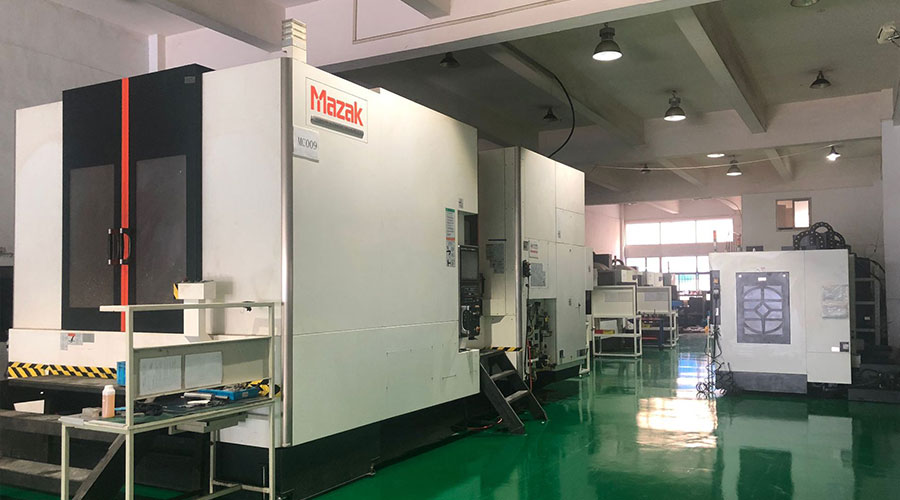 Sheet metal, beryllium, carbon steel, magnesium, 3D printing, precision CNC machining services for heavy equipment, construction, agriculture and hydraulic industries. Suitable for plastics and rare alloys machining. It can turn parts up to 15.7 inches in diameter. Processes include swiss machining,broaching, turning, milling, boring and threading. It also provides metal polishing, painting, surface grinding and shaft straightening services. The production range is up to 50,000 pieces. Suitable for screw, coupling, bearing, pump, gearbox housing, drum dryer and rotary feed valve applications.PTJ will strategize with you to provide the most cost-effective services to help you reach your target,Welcome to Contact us ( [email protected] ) directly for your new project.
Sheet metal, beryllium, carbon steel, magnesium, 3D printing, precision CNC machining services for heavy equipment, construction, agriculture and hydraulic industries. Suitable for plastics and rare alloys machining. It can turn parts up to 15.7 inches in diameter. Processes include swiss machining,broaching, turning, milling, boring and threading. It also provides metal polishing, painting, surface grinding and shaft straightening services. The production range is up to 50,000 pieces. Suitable for screw, coupling, bearing, pump, gearbox housing, drum dryer and rotary feed valve applications.PTJ will strategize with you to provide the most cost-effective services to help you reach your target,Welcome to Contact us ( [email protected] ) directly for your new project.
Link to this article:Optimize The Finishing Method Of Titanium Alloy
Reprint Statement: If there are no special instructions, all articles on this site are original. Please indicate the source for reprinting:Tungusten,Thanks!^^

